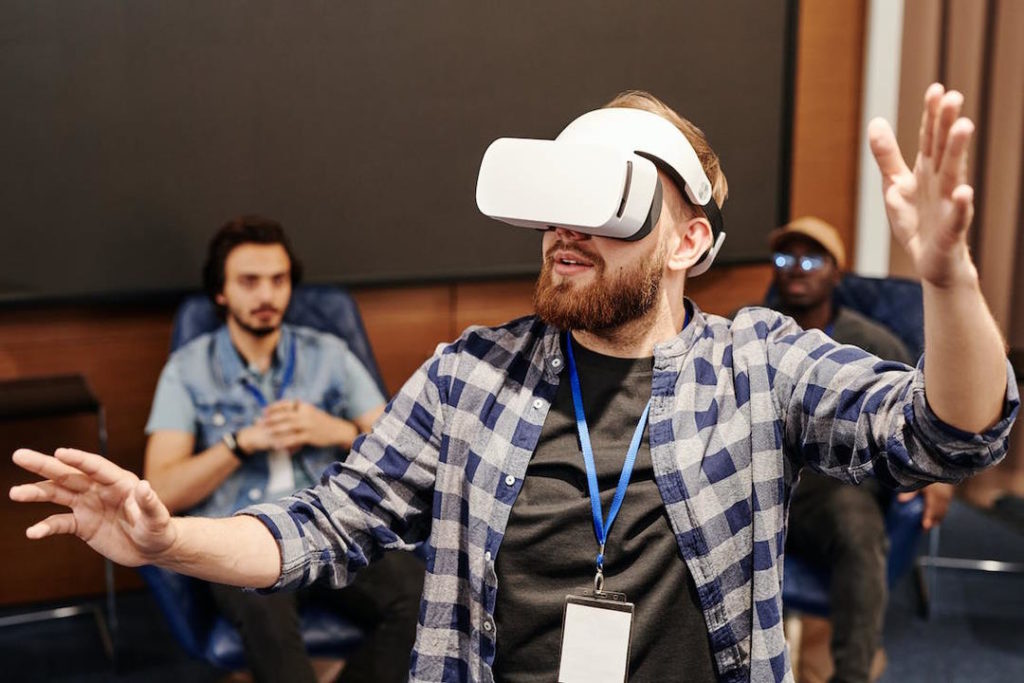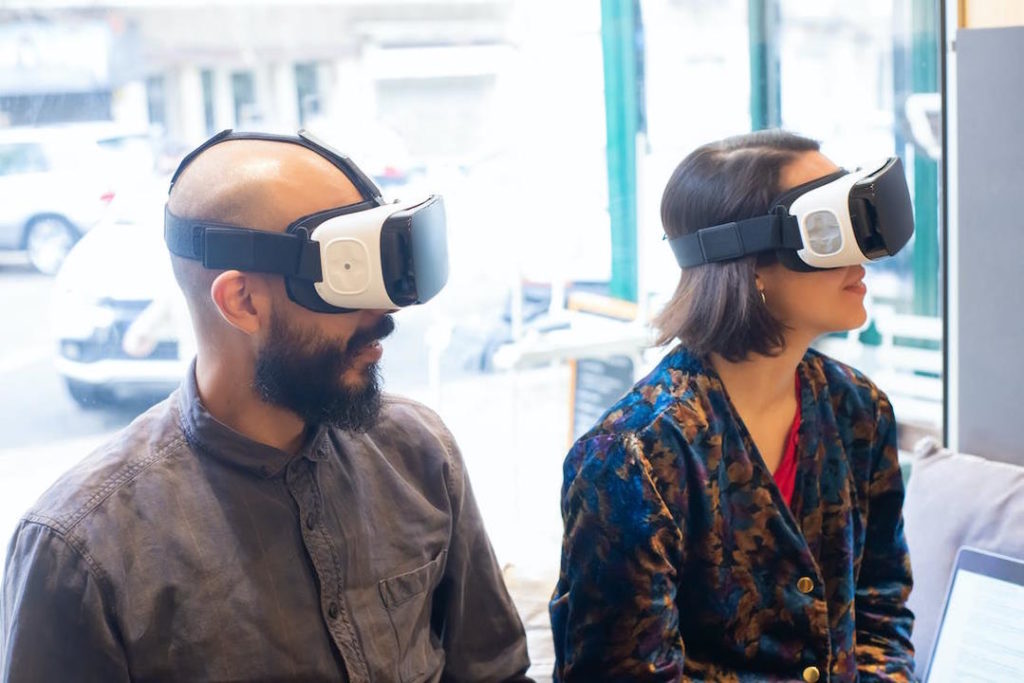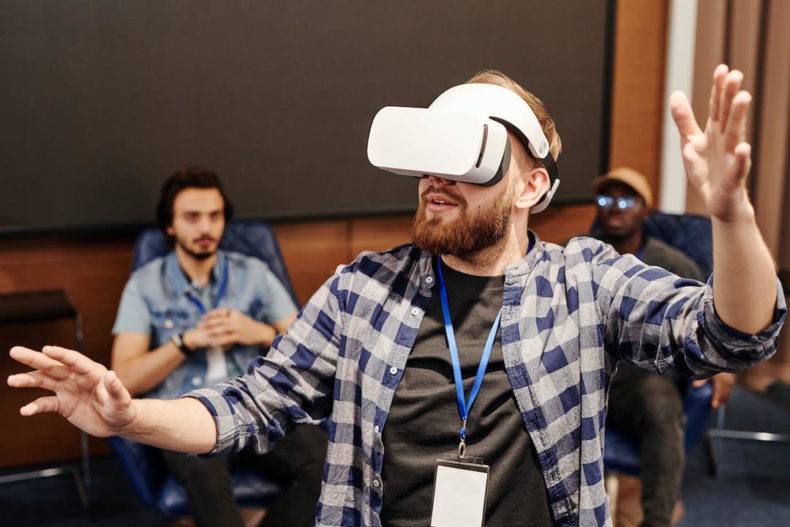The business world is no stranger to disruptions. Every now and then, a new technology emerges that forces companies to rethink the way they operate and compete.
Virtual reality (VR) is one such technology that has the potential to revolutionise how businesses interact with customers and create immersive experiences. Let’s explore the possibilities of VR for businesses.
How Companies are Leveraging Virtual Reality?
From retail to entertainment, many companies have already begun leveraging the power of virtual reality in their operations.
Retail stores, for example, can use virtual reality to give customers a 360-degree look at products before they purchase them. This allows customers to experience products as if they were right in front of them—without ever having to step foot in a store.
Similarly, entertainment companies are taking advantage of virtual reality to provide more immersive experiences for their fans. By combining 3D sound and visuals with haptic feedback technology, entertainment companies can let fans experience concerts from their living rooms or travel through time without leaving home—all thanks to virtual reality.
In real estate, virtual reality can be used to give buyers a first-hand look at properties without having to leave the comfort of their homes. This is especially useful for people in remote locations that are unable to visit a property before buying.
Marketing and advertising are other fields where virtual reality can play a huge role. Companies can create interactive campaigns that engage customers in new and exciting ways. For example, they can create product demonstrations, 360-degree videos, or even entire virtual worlds for potential customers to explore. Tethered VR headsets for smartphones and PCs, or standalone devices, can be used for virtual reality experiences.
Finally, companies are using virtual reality to improve their operations internally as well. Virtual reality can be used to train employees by simulating real-world scenarios and helping them hone their skills without the need for expensive equipment or facilities.
As businesses continue to embrace virtual reality, there’s no telling what kind of experiences they will be able to create in the years to come. With its potential for immersive customer engagement, VR is sure to become an integral part of the corporate world.
8 Benefits of Investing in VR Technology
There are many advantages to investing in VR technology, which can help businesses gain an edge in the market:
1. Cost-effectiveness
Investing in virtual reality is much more cost-effective than physical products or services. By utilising virtual reality, businesses can cut down on overhead costs while maximising output.
Companies can save on transportation and labour costs by allowing customers to experience products or services without having to leave their homes. This also reduces the need for physical stores and reduces the cost of maintenance and upkeep of such facilities.

In addition, virtual reality can also improve employees’ efficiency by allowing them to practise in a simulated environment. This reduces the need for expensive equipment and training materials, making it easier for businesses to invest in their employees.
2. Improved customer experiences
Virtual reality technology is allowing businesses to revolutionise customer experience by creating immersive and engaging experiences that traditional methods simply can’t match.
It allows customers to explore products and services in a virtual environment, with 360-degree views and sensory feedback. This allows them to get an up-close look at what they are interested in buying without ever having to step foot in a store.
VR headset for VRChat also provides customers with an opportunity to interact with products or services in a more realistic way, which can enhance the overall customer experience. This can lead to higher customer satisfaction and loyalty, helping businesses build strong relationships with their customers.
3. Enhanced training
VR technology can be used to train employees in a variety of different scenarios without the need for physical resources or locations.
Investing in virtual reality technology can greatly reduce the cost of training large numbers of people at once. By utilising a virtual environment, businesses can create simulations that closely mimic the real world, allowing employees to practise and hone their skills without having to use expensive equipment or facilities.
In addition, virtual reality can be used to create more efficient training programs, as employees can learn at their own pace and repeat tasks until they feel comfortable with them. This allows employees to stay up to date on the latest practices and skills in their field, helping businesses remain competitive.
4. Increased productivity
Virtual reality technology can be used to automate certain tasks, allowing employees to focus on more important aspects of their roles. Automation helps to reduce the amount of time and energy spent on mundane, repetitive tasks, which can lead to improved productivity and efficiency.
VR automation solutions can be used to streamline processes in various industries, from healthcare to retail. By employing these solutions, businesses can reduce their operating costs while increasing the quality of their services.
5. Improved collaboration
Virtual reality technology can be utilised to bridge the gap between remote teams, allowing them to collaborate in a single virtual space.
By creating a shared environment, teams can come together for meetings and other activities without having to physically gather in one place. This helps companies save on travel costs while still providing their employees with an interactive and engaging workspace.
6. Real-time data visualisation
VR technology can be used to provide real-time visualisations of complex data sets, making it easier and faster for teams to make decisions.

With the help of virtual reality, businesses can create 3D immersive environments where users can interact with multiple data sets simultaneously and explore their relationships with each other. This gives decision-makers greater insights into the data, allowing them to make informed decisions quickly and efficiently.
In addition, virtual reality can be used to create real-time simulations, allowing teams to test various scenarios and analyse their outcomes. This helps businesses gain valuable insights that they can use to improve their processes and operations.
7. Increased customer engagement
Finally, businesses can use virtual reality to increase customer engagement by providing interactive experiences tailored to their needs.
By leveraging the power of VR, businesses have the potential to revolutionise how they operate and create powerful and engaging experiences for customers. Companies that invest in this technology now can be at the forefront of a new wave of innovation and will likely reap the rewards in the future.
Conclusion
Virtual reality has emerged as an exciting new technology that has the potential to revolutionise how businesses interact with customers and create immersive experiences like never before. From retail stores giving customers a 360-degree view of products before they purchase them to entertainment venues providing fans with more immersive experiences than ever before—the possibilities are truly endless when it comes to leveraging VR for business purposes.
Investing in VR technology may seem expensive at first but it pays dividends in terms of cost savings and better customer service over time. So if you’re looking for ways to boost your company’s bottom line while improving customer engagement levels—virtual reality could be your answer.





